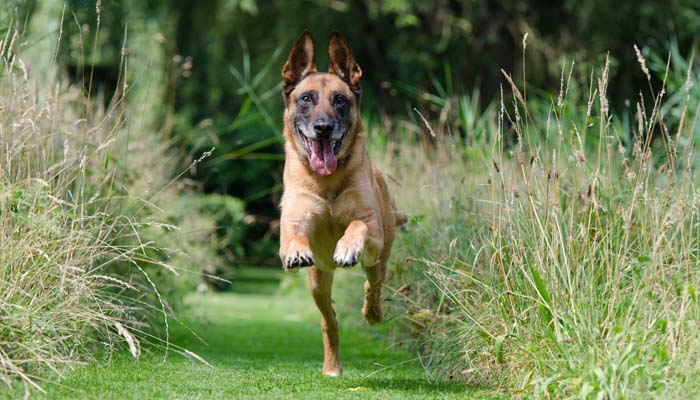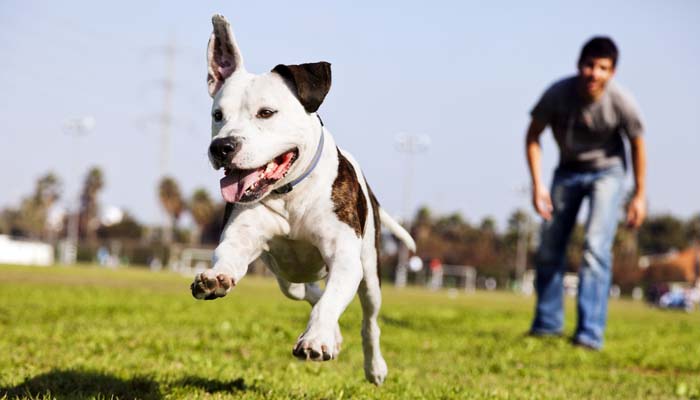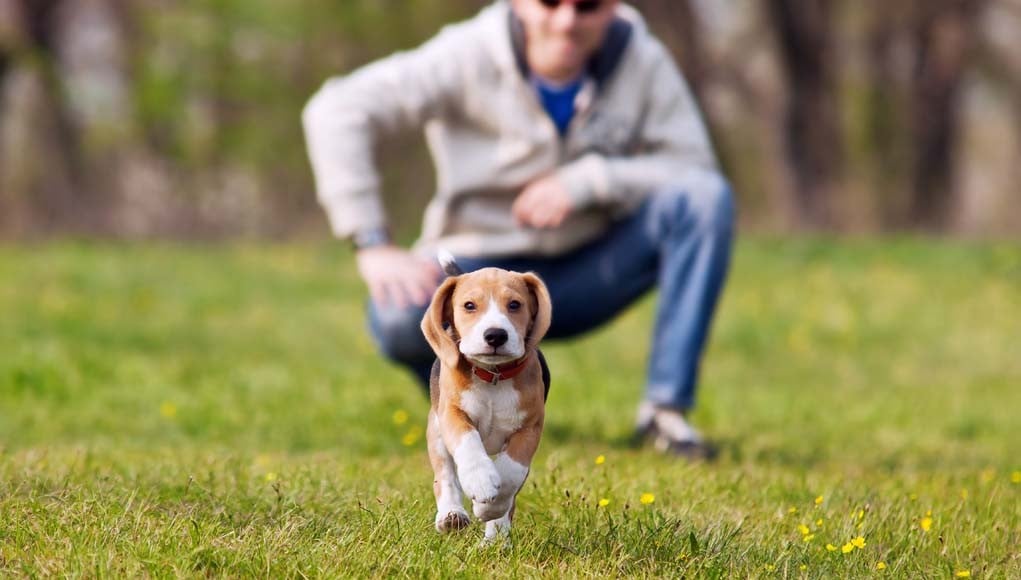There is nothing more rewarding than training your dog. Well, perhaps there are some things, but training’s way up there on the list. Although it can be frustrating at times, electronic dog collars is a great way for the two of you to bond. There are many different methods of training, so before you decide on one researching your options would be wise.
Behavioral training is one method of teaching your dog what’s expected of him and in the long run, is much more effective than shock collars (which jolt your dog painfully if he misbehaves), choke collars (which have spikes that dig into his neck if he exhibits undesirable behavior), or other inhumane treatment.
While there are humane collars such as citronella collars or head harnesses that help him stay on track, teaching recall using behavioral training will vastly improve your dog’s response skills and overall behavior.
Recall Command Basics and How to Teach It To Your Dog
The idea behind recall is in its name: it teaches your dog to come to you immediately when you call him (no dillydallying). This is not an innate behavior. It has to be taught, and he will not do it at first. It will take patience and consistency to teach your pet the recall command.

Dogs sometimes have their own agenda, and without training, they can be easily distracted. To overcome this, you teach him that coming to you when called is a great response that leads to something good. It's a gradual process.
RELATED: 10 Best Dog Products for Solving Behavior Problems
Before you begin training, however, you must ensure that your dog knows his name. This might sound self-evident, but don’t assume that he automatically knows his name just because you do.
Some dogs ignore their name because they hear it so often, and if the sound of his name isn’t significant to him, your dog won’t take you seriously. Before beginning any kind of training, make sure your dog knows that his name refers to him and means that he needs to pay attention and obey when he hears it.
[optin-monster-shortcode id=”mmevqhqfl46p1is5″]
Studies done on dogs’ responses to positive reinforcement versus negative have shown that positivity is overwhelmingly more effective, a finding also true for humans! Teaching your dog to return to you when you call his name relies on positive reinforcement for desirable behavior — or attempts at desirable behavior, a process called “shaping,” rewarding behavior as it approaches more closely over time to the desired behavior.
If you tell him to come and then discipline him (negative reinforcement) if he doesn't respond, he’ll be reluctant to obey you the next time because no dog likes being disciplined and he was disciplined during his training sessions. Positive reinforcement is the best way to teach your dog any command.
Training a puppy is usually easier because puppies don’t have undesirable behavior that has to be extinguished before the desired behavior can be taught. Puppies naturally want to stay close to you. But because their attention span is not very long and may be diverted by stimuli that will result in injury, if you’re in an unfenced area, you may want to train them using a leash so you can catch them if they run off (not a bad idea for some adult dogs too).
Your dog’s breed can be a factor in how well he responds to recall training. Some breeds are not as responsive to rewards as others. For instance, hounds are generally unimpressed by attempts to entice them into behaving, meaning that on the whole, normal material rewards might not be as effective for hounds as they are with other breeds. The key is to find something your dog really likes and use it to your advantage.

It's time to begin teaching
The setting in which you practice this new response with your dog matters a great deal. Start in your home. Make sure you’re in a quiet environment where your dog will easily hear you call his name and won’t be distracted. Grab a treat or a dog toy or anything your dog likes. Call his name and then praise him and give him a treat or toss him the toy when he acknowledges you.
RELATED: Top 10 Best Dog Training Collars (Premium Quality) in 2015
Next, distance yourself from your dog and wait until he's looking elsewhere and not preoccupied with you. Call his name and if he turns to acknowledge you, again praise and make a fuss over him and give him a treat or his toy.
Repeat each process 10–15 times — repetition is important for teaching recall. It helps him associate his name with something positive, and making this association is the basis for what you are trying to do. Repetition will teach the connection and then cement the response — acknowledging you when you call his name. Once you’re confident that your dog knows his name and understands that acknowledging his name leads to a good thing, you can move on to the next step.
If he doesn’t acknowledge you, don’t keep calling his name. He’ll start to tune you out. Instead, walk away from him and take the toy or treat with you, which removes the reward. He won’t like that you’re removing yourself and his toy or treat, and eventually he’ll make the connection between obeying and receiving the treat or toy.
RELATED: Puppy Training 101: Basic Walkthrough
Now you’re ready to take the next step. Put some distance between you and your dog and call him by saying, “Fido, come!” Beckon with your hands. If your dog comes to you, reward him immediately with treats, praise, toys — whatever he likes. Repeat this several times. Again, however, if he doesn’t come to you, don’t repeat yourself over and over. This will take away the meaning of your words and convince him that what you’re saying is not important.

After your dog learns the proper response when you call his name, you can count on him to come when he's called — most of the time. Although it’s probably the most important response for him to learn, don’t assume that your dog will obey each and every time.
Keep in mind that there are some things that might be more attractive to him right at that moment than pleasing you. The goal is to make your dog’s returns as consistent and reliable as possible. But try to avoid situations in which obeying a recall command is the only thing that prevents injury to him.
Training your dog can be a rewarding, beneficial experience for both of you. Through perseverance and positive reinforcement, you can make your dog’s return consistent, improving his behavior and strengthening the bond between you.













